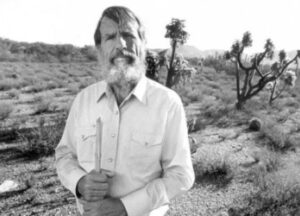Edward Jean Steichen (1879–1973) was an American photographer,painter,and art gallery and museum curator. From 1923 to 1938,Steichen was regarded as the best known and highest paid fashion and advertising photographer in the world.
Medic has obtained the military records of Edward Steichen. The categories are: Service Records 1; Service Records 2; Service Records 3; Service Records 4; Service Records 5; Medical Records; Efficiency and Fitness Reports; Awards, Decorations,Commendations; Correspondence; Reference Correspondence.
During World War I Steichen headed the Army’s aerial reconnaissance division. Prior to WWII Steichen tried to reenlist in the Army but was turned down. In 1942,his Museum of Modern Art photo exhibit portraying national defense was retitled “The Road to Victory” after the Japanese attacked Pearl Harbor, in order to promote the war effort.
Arthur Radford, a Navy captain,in charge of Navy pilot training and recruitment, took an interest in Steichen. Through his efforts the 62 year old photographer was appointed head of the U.S. Naval Aviation Photographic Unit and commander of all Navy combat photography. Steichen’s war photos, which emphasized the humanity of war over its machines and munitions, were highly popular and widely acclaimed.
After the war, in 1947,Steichen became the director of photography at The Museum of Modern Art. Here, he led 46 exhibitions, the most famous being “The Family of Man” in 1955. The work of 273 photographers from 68 countries presented photography as a healing force, an art that could make human beings aware of their common humanity.
After his retirement in 1962,Steichen turned his attention to color photography and to film, capturing in his late work a vision of the renewable forces of nature. In 1963, President Kennedy presented him with the Presidential Medal of Freedom in recognition of a lifetime of achievement.

Edward Steichen
Edward Jean Steichen (1879–1973) was an American photographer,painter,and art gallery and museum curator. From 1923 to 1938,Steichen was regarded as the best known and highest paid fashion and advertising photographer in the world.
Medic has obtained the military records of Edward Steichen. The categories are: Service Records 1; Service Records 2; Service Records 3; Service Records 4; Service Records 5; Medical Records; Efficiency and Fitness Reports; Awards, Decorations,Commendations; Correspondence; Reference Correspondence.
During World War I Steichen headed the Army’s aerial reconnaissance division. Prior to WWII Steichen tried to reenlist in the Army but was turned down. In 1942,his Museum of Modern Art photo exhibit portraying national defense was retitled “The Road to Victory” after the Japanese attacked Pearl Harbor, in order to promote the war effort.
Arthur Radford, a Navy captain,in charge of Navy pilot training and recruitment, took an interest in Steichen. Through his efforts the 62 year old photographer was appointed head of the U.S. Naval Aviation Photographic Unit and commander of all Navy combat photography. Steichen’s war photos, which emphasized the humanity of war over its machines and munitions, were highly popular and widely acclaimed.
After the war, in 1947,Steichen became the director of photography at The Museum of Modern Art. Here, he led 46 exhibitions, the most famous being “The Family of Man” in 1955. The work of 273 photographers from 68 countries presented photography as a healing force, an art that could make human beings aware of their common humanity.
After his retirement in 1962,Steichen turned his attention to color photography and to film, capturing in his late work a vision of the renewable forces of nature. In 1963, President Kennedy presented him with the Presidential Medal of Freedom in recognition of a lifetime of achievement.